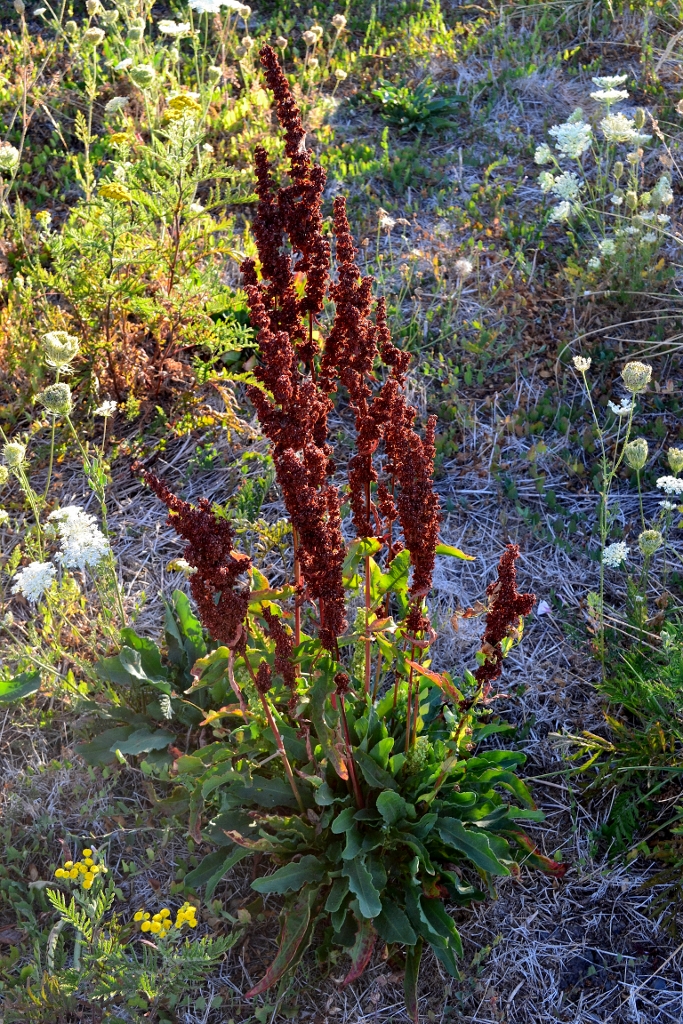#foraging the northwest
10 Wild Roots You Can Forage During Wintertime
10 Wild Roots You Can Forage During Wintertime
The least likely time of the year you would expect to forage well is during the wintertime. While it may not look like there’s much to eat above the surface, below there are energy-dense roots, rhizomes, tubers, and bulbs that can help keep the body warm on these frigid days. In fact, it’s during wintertime when root foraging is prime! We can thank the process of dormancy as these perennials and…

Hi Folks!
I am very excited to announce the release of this second print of The Northwest Forager’sPocket Guide to Wild Edible Plants!
Now with new features! Introducing the “found it!” check box for each plant, easy flip through color coded categories, and extra field note pages to record your findings for future reference.
This true pocket-sized guide (Measuring 3.5″ x 5″) features 26 of the Pacific Northwest’s most common and easy to identify edible plants as well as 5 hazardous look-alikes. It’s convenient size and easy-to-use format make this the ideal field guide to take with you in all your northwest adventures! Never go hiking, camping or hunting again without being prepared to explore the wild flavors of nature’s produce.
How to Use this Guide
The contents have been divided into three categories (Leafy Vegetables, Root Vegetables, Fruit Berries). The plants in each category have been arranged according to seasonal availability. There are two pages per plant. The 1st displays the plant in its natural growing environment and lists information such as its scientific name, growing habitat, as well as when and what parts to use. The 2nd notes basic info such as history, preparation, and nutritional value. It also displays specific edible parts as well as identifiable features. Plants with a common poisonous look-alike will be referenced in the back of the guide.
Table of Contents
Leafy Vegetables
- Bittercress
- Stinging Nettle
- Chickweed
- Siberian Miner’s Lettuce
- Wood Sorrel
- Lady Fern
- Plantain
- Cat’s Ear
- Nipplewort
- Broadleaf Dock
- Oxeye Daisy
- Lambs Quarter
- Purslane
Root Vegetables
- Dandelion
- Wild Onion
- Cattail
- Queen Anne’s Lace
- Field Mustard
- Burdock
- Camas
Fruit Berries
- Salmonberry
- Huckleberry
- Thimbleberry
- Salal
- Huckleberry Evergreen
- Elderberry
How to Order your Copy
Available on,
For purchases outside of the United States please use the followingeBaylink
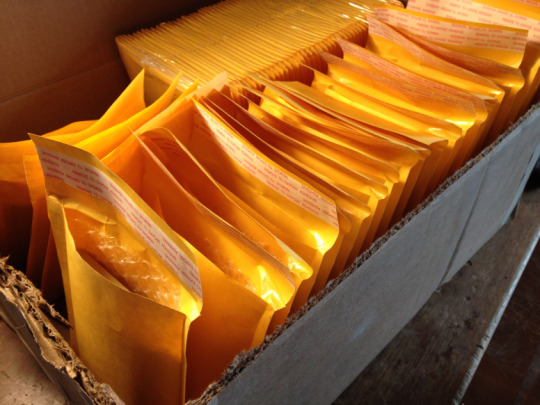
A huge thank you to everyone who has ordered a copy! We are truly grateful for all the support shown :]
Please help other customers decide if this book is right for them by leaving a review in the comment box below.
Now Available! Pocket Guide to Wild Edible Plants Hi Folks! I am very excited to announce the release of this second print of The Northwest Forager's…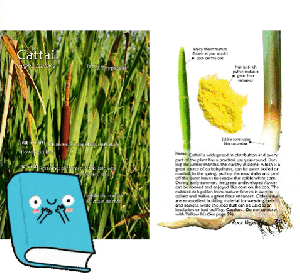
Hi Folks,
I am very excited to announce the launch of our Kickstarter campaign starting Saturday, May 23, 2020! The goal of this campaign is to raise the funds needed to print another batch of my book: The Northwest Forager’s Pocket Guide to Wild Edible Plants. This is an exciting opportunity for everyone who makes a pledge.
- $1 gets your name credited in this print.
- $15 gets you your own personal…
Hi Folks!
I am very excited to announce the release of The Northwest Forager’sPocket Guide to Wild Edible Plants! This true pocket-sized guide (Measuring 3.5″ x 5″) features 26 of the Pacific Northwest’s most common and easy to identify edible plants as well as 5 hazardous look-alikes. It’s convenient size and easy-to-use format make this the ideal field guide to take with you in all your northwest adventures! Never go hiking, camping or hunting again without being prepared to explore the wild flavors of nature’s produce.
How to Use this Guide
The contents have been divided into three categories (Leafy Vegetables, Root Vegetables, Fruit Berries). The plants in each category have been arranged according to seasonal availability. There are two pages per plant. The 1st displays the plant in its natural growing environment and lists information such as its scientific name, growing habitat, as well as when and what parts to use. The 2nd notes basic info such as history, preparation, and nutritional value. It also displays specific edible parts as well as identifiable features. If a plant has a common poisonous look-alike, it will be referenced in the back of the guide.
Table of Contents
Leafy Vegetables
- Bittercress
- Stinging Nettle
- Chickweed
- Siberian Miner’s Lettuce
- Wood Sorrel
- Lady Fern
- Plantain
- Cat’s Ear
- Nipplewort
- Broadleaf Dock
- Oxeye Daisy
- Lambs Quarter
- Purslane
Root Vegetables
- Dandelion
- Wild Onion
- Cattail
- Queen Anne’s Lace
- Field Mustard
- Burdock
- Camas
Fruit Berries
- Salmonberry
- Huckleberry
- Thimbleberry
- Salal
- Huckleberry Evergreen
- Elderberry
How to Order your Copy
For a limited time, there will be free shipping within the United States!
Purchase securely via your account or debit/credit card through PayPal.
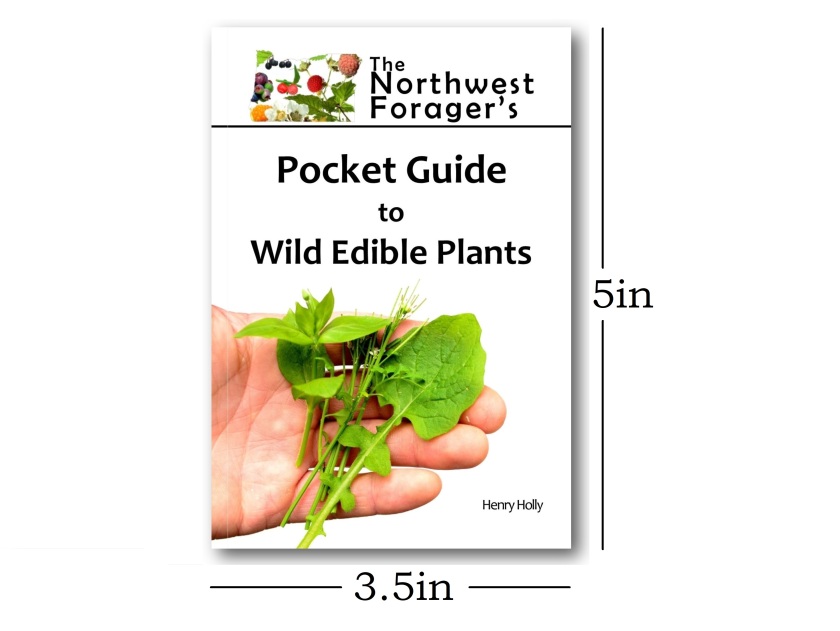
The Northwest Forager’s Pocket Guide to Wild Edible Plants
(1 Book) 68 pages, 100 color photos, 26 wild edible plants that include their Greens, Flowers, Roots, Seeds & Berries, plus 5 poisonous look-alikes, Elevation Map of Pacific Northwest, Measures 3.5″ by 5″ (truly pocket size), ISBN 978-0-692-07826-6, Text & Photographs by Henry Holly, Copyright 2018, Published by The Northwest Forager, Printed by Lightning Press, NJ (USA).
$12.95
For purchases outside of the United States please use the followingeBaylink.
To purchase by Check or Money Order within the United States please make a payment in the amount of $12.95 and mail to: The Northwest Forager Henry Holly PO BOX 55 Crabtree, OR 97335

Please help other customers decide if this book is right for them by leaving a review in the comment box below.
New Release! Pocket Guide to Wild Edible Plants from The Northwest Forager Hi Folks! I am very excited to announce the release of The Northwest Forager’s Pocket Guide to Wild Edible Plants…Prevent Weeds with a Weed: Lambsquarters by Suburban Homestead
“Here’s a crazy idea: why not use a weed to prevent other weeds in the garden. Lambsquarters is an edible weed that is perfect for that.
Survival Food: Japanese Knotweed Shoots by Animal Man Survivor
“This plant is one of the most important wild foods to know- partly because of the huge volume of food you can get quickly, and also because of this plant’s extensive range.” -Animal Man Survivor. For more great videos by Animal Man Survivor please check out his>> youtube channel.
Stinging Nettle Soup – 18th Century Cooking Series by Jas. Townsend and Son
“How to make stinging nettle soup. Highly nutritious and historically accurate food for the reenactor in you.” -Jas.
Harvesting and cooking Morel Mushrooms by GuideYouOutdoors
“While cleaning up trash around my campsite in the morning I stumbled across a spore trail of morel mushrooms.” -GuideYouOutdoors…
Roasting Wild Carrot on a Camp Fire by The Northwest Forager
In this episode of The Northwest Forager we learn one method on how to prepare and roast wild carrot on a campfire using nothing more than the natural elements around. For more videos from the Northwest Forager please subscribe>> here.
Wild Field Mustard: How to Pick & Process by Haphazard Homestead
“This video shows how to identify and pick Wild Field Mustard that’s growing as a weed in your garden, or out in the wild.
How to video: Wild lemonade style tea
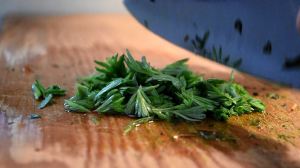
In this episode we will make a delicious and refreshing lemonade style beverage using Wood Sorrel (Oxalis oregana) and fresh Western Hemlock (Tsuga heterophylla) sprouts.
Recipe:
1/3 cup chopped wood sorrel leaves & stems
¼ cup chopped hemlock sprouts
¼ sugar or honey
1 pint of cold waterFinely chop both the wood sorrel and…
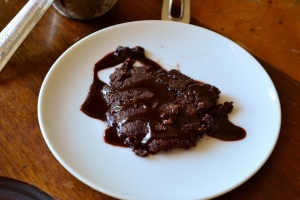
In the previous article we considered the use of Dock’s seeds, grinding it into flour. In today’s article we’ll put this flour to use with two tasty recipes that you can try at home! Each one is very basic, requires minimal ingredients and is based on small servings. To make a larger batch, simply multiply the measurements. Shall we get started?
[youtube=http://www.youtube.com/watch?v=3ttUjV_kdwE…
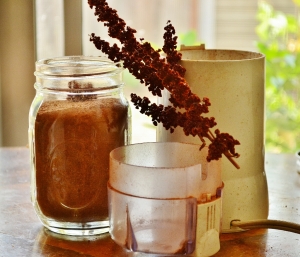
Dock (Rumex) consist of a variety of edible plants found over most of the Earth. Two of the most commonly known varieties is Curly Dock and the Broad-leaved Dock. Typically it’s the vitamin-rich leaves which are most often enjoyed. In today’s article, however, we will consider the use of Dock’s seeds.
Curly Dock – Rumex crispus
Dock is both protrusive and wide-spread in its distribution. Therefor…
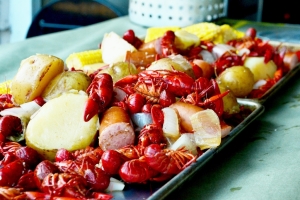
Arthropods and Crustaceansaka Water Bugs! In the western civilization that’s typically not our idea of a lip smacking entrée. However, add some Cajun sauce, sliced potatoes, corn and sausage, boiled with 5lbs of Crawfish, and that’s just what you get. A lip smacking, shell cracking, disemboweling, finger licking water bug dinner. Sound disgusting or maybe even barbaric? Try both. Even so that…
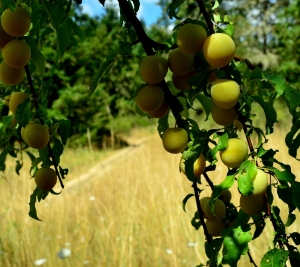
When harvest is abundant, Fruit liquors are a fun and tasty way to enjoy the extra fruit hanging around. In this article we’ll go over 5 easy steps in preparing fruit liquor with the fruit of your choice.
IngredientsStep 1 – Choosing the fruit
- Fresh Fruit
- Sugar
- Vodka or Tequila
Pick a fruit that is fully ripe, full of juice, and can easily be packed into a jar without crushing. In this case,…
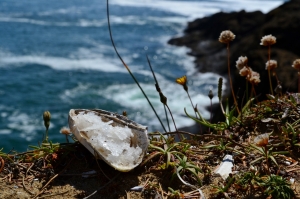
Sometimes there’s nothing more satisfying than food made from scratch. Especially when you throw the raw ingredients together like a mad chemist calculated by art. A pinch here, a dash there, mixing and cooking, steaming and tossing, sipping the wooden spoon… and vuala! As a forager we can take that satisfaction one step further and make the raw ingredients from scratch. In this case were going…
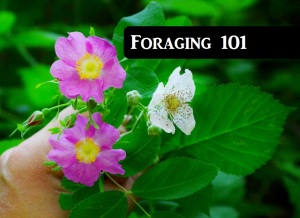
Taking the time to learn and understand the relationships of the many plant families (as they are classified by the scientific community) is an important step to plant identification. It also serves as a basis for hypothesizing and thus discovering new potential wild edibles. In this article I will cover a short lesson on learning how to recognize plant similarities in relation to other members…
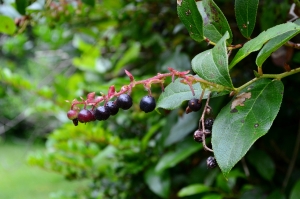
Gaultheria shallonA Salal shrub (Gaultheria shallon) well established on a piece of drift wood as commonly seen along the Oregon coast.
Salal berry could be perhaps one of the most widely abundant and under appreciated wild fruits of the Pacific Northwest. Common along coast lines, coniferous forest, logging roads, and river banks, Salal is a delightful treat that can be enjoyed during most…
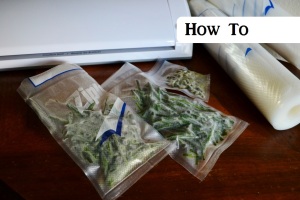
We wait all year for our favorite delicacy to come into season only to watch it spring, mature and wither before our very eyes. Living in the high speed world of today we’re fortunate just to get a taste or two while it’s still in its prime. So unless one is a fulltime “hunter and gatherer”… initiating methods of food preservation is a must if we are to capture the seasonally fresh flavor of…


